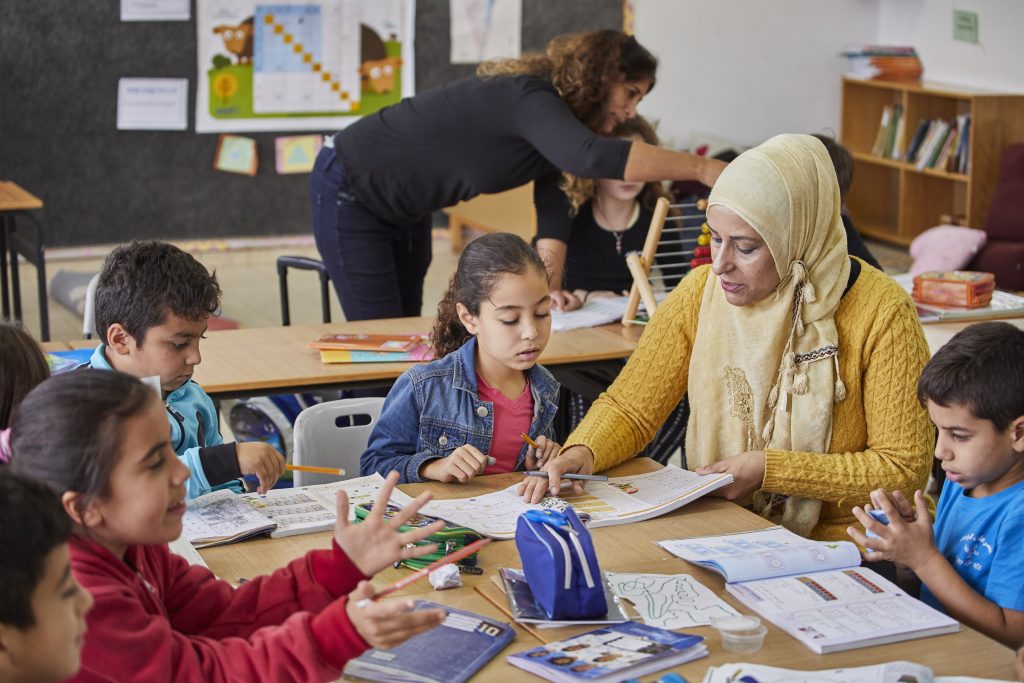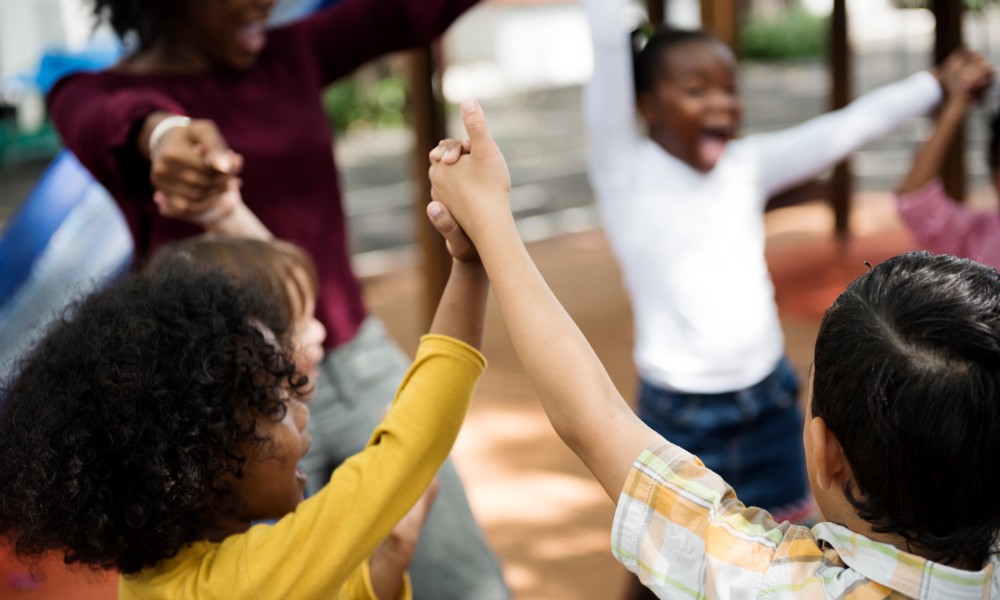Community education in Israel

The community learning center movement has also taken hold in Israel. Over the past twenty years, innovative thinking about education has taken root in this country. This reflection takes place outside the establishments of the traditional school system. It takes place in community centers and other informal establishments run by members of the community. Asher Levy, executive director of the Association for Adult Education in Israel and former deputy director of the Israeli Association of Outreach Centers, describes outreach education methods and his experience.
Community education

Over the past twenty years, an innovative educational approach has developed in Israel. The process did not take place in the institutions of the conventional school system, but in community centers and other informal institutions run by community members. The approach is reflected in the terminology used: for example, the active form hinukh – an educated person educates an uneducated person – has been replaced by the form hithankhut: a process followed by learners, 1 in which accompanying adults (or teachers ) play the role of facilitators. Teachers certainly have more experience than learners, but it is the latter who are interested in learning. This process should therefore not be dictated by the knowledge of teachers, but on the contrary by curiosity, initiative and daring, which are the characteristics of the learner. It is the dialogue between experience and knowledge on the one hand, curiosity and interest on the other, which determines the success of the educational process.
The social aspect
Community education can be successful with learners from any community. The Israeli Association of Community Centers has chosen to focus its action on people with low educational attainment. This decision emanates from an overarching social philosophy according to which communities that ignore the failures of their learners in the formal education system exclude themselves from important decisions in public life, and disconnect themselves from the true vital flow of their members. The populations of the localities in which the community education program was developed were only able to escape the vicious circle of poverty, need, the feeling of abandonment and despair thanks to higher education. In Israeli society, education is the sine qua non condition for obtaining prestigious positions in terms of social status and socio-economic mobility. In addition to its other crucial aspects, informal community education has become a key tool for fundamentally changing the communities in which it operates. As both a primary and professional field, it enhances the prestige of communities and their sense of self-worth.
The objectives of the hinukh and hithankhut approaches
In conventional school education, the goal is to acquire knowledge. The entire educational effort is invested in questions such as: What knowledge should the graduate have acquired, and in what subjects? Which subjects to choose in which teaching programs? What programs to prepare? How to distribute teaching materials throughout schooling, taking into account the mental, physiological and psychological capacities of children at different ages (without forgetting that children remain in the system for at least 12 years)? All this requires training teachers responsible for teaching specific programs according to the age of the students, writing appropriate textbooks and creating examination and performance evaluation methods, all of which is supervised by the State: this school system revolves around the knowledge that must be transmitted by the school.
The community education approach, on the other hand, is learner-centered – and that’s not just because the teachers in this system are nicer. This is because, above all, they refuse to sanction the learner who decides not to participate in the course. He will only come to the community school if he wants to. If we want him to want it, we have to ask ourselves the following questions: What interests him? What is important to him? What does he need? The learner becomes the object of the community education approach, it is he who dictates the other elements of community learning. It is therefore a question of choosing teaching methods that are both attractive to the learner and meet their needs, our goal being that they choose to continue learning.
Educational principles of community education
It goes without saying that the methods used in these innovative projects are based on educational principles different from those of conventional teaching.
1. Everyone is capable of success
We start from the principle that everyone is capable of success. But achieve what ? Anyone is capable of meeting the demands of the formal education system. In other words, even though learners are different and have different abilities, the system was not built for geniuses but rather for the average learner. An average child is thus capable of succeeding in this system, because it was designed for him: to meet the average criteria imposed, those who are below average must make a greater effort and be supported by their environment. Any child without organic disorders is capable of meeting the demands of the system; in fact, even children with minor mental disorders are also capable of this without much effort.
In Israel, more than 50% of people over 18 do not take their baccalaureate for reasons that have nothing to do with their mental faculties – so these reasons must be looked elsewhere. Failure is due, among other things, to what the learner’s environment expects of him: expectations of the family, the peer group, the school, the teachers, but above all, the expectations of the learner. -even. If he believes he is capable of succeeding, the learner will find the necessary resources within himself and succeed. If we want students who have learning difficulties to succeed, we must work on all the concomitant dimensions that I have just mentioned.
The principle has many correlatives which I cannot mention in their entirety; I will just mention the most important one. If we want to strengthen the self-confidence and personality of the learner, we must first of all refrain from pursuing him . Any categorization in this direction gives a boost to those who are already at the top (it is in fact aimed at them), and stigmatizes all others, promising them a difficult future. Pygmalion at school proves that the confidence of the environment and of the learner himself in his own abilities is the best asset for his academic success.
2. Exploit cognitive skills, but also others
Unlike the traditional approach, the hithankhut approach does not focus exclusively on cognitive and intellectual faculties. According to some studies, these abilities are only particularly developed in around 25% of learners. They are the ones who do best in the formal system, because it was developed for them. 75% of learners have other skills that are better developed: emotional, aesthetic, motor, social faculties, etc. While today everyone is talking about multiple intelligences , schools continue to focus on intellectual faculties. The remaining 75% do not have an easy time at school, as it still emphasizes intellectual abilities (learning materials, comprehension, long-term retention, collection and use in exams and dissertations) . They struggle, give up; This is the majority of the population, and they do not have their baccalaureate. On the other hand, we often meet adults who have been very poor students while having been wonderfully successful in life: artists, famous athletes, businessmen or even social and political leaders. This is because life is much richer and more varied than the narrow areas on which the school has decided to focus, for the simple reason that it does not know how to quantify or measure the success of learners in areas that are not purely intellectual. If we want to support students whose intellectual abilities do not allow them to achieve academic success, we must exploit their other strengths using artistic, playful, sporting, collective and supportive methods.
The community is the ideal natural environment to concentrate these activities under one educational and environmental roof.
3. Never alone
The community also provides the ideal natural environment to realize another dimension of the hithankhut approach . More particularly with students who are unsure of themselves, educational action must always take into account other elements of the living environment. The attitude of the family obviously has a crucial importance on the attitude of the student. A family that denigrates or despises education seriously jeopardizes its chances of success. The attitude of the peer group is also important. We further know that media have a strong impact on learner perceptions. Until now, no one has yet taken this dimension into consideration in school pedagogical practice, although we should not exaggerate the importance of the school and the respective teachers (not only the one who is in face of the student at a specific moment) on educational successes. Therefore, any effort to help the student succeed must take these factors into account. This is not provided for in the conventional system.
The community always provides an opportunity to design frameworks that connect us to parents of students at other levels, which can be helpful to the student’s education.
Community education is also the natural environment of social peer groups, which also represent support for the student. Additionally, community institutions are sufficiently well equipped to integrate communications and other soft activities into learning contexts.
4. Harness the learner’s strengths
The formal education system has always focused on the weaknesses of the learner. If the results in mathematics, for example, are unsatisfactory, overtime is added. The community education system, on the other hand, does not focus on weaknesses or solve problems by accumulating additional teaching hours. What good will this do if the problem is chronic and the student has failed so far? If, on the other hand, we base ourselves on the student’s strengths, we find ways to make them believe in their ability to take on difficult challenges. In teaching, it is always useful to exploit the student’s strengths and then guide them towards more difficult tasks.
This strategy has very specific consequences for the methodology: the student must experience a new learning adventure, develop their own success story. The trigger can take place whenever the learner has the feeling that he knows; if we want to build a success story on this basis, we must plan for successes.
Learning content must match the learner’s daily life. It is also important to give the student greater freedom of choice as they progress. The learner’s informed choice empowers him and strengthens his capacity to make independent decisions. But above all, by focusing on the learner’s strengths, we harness their strengths and energies, and enable them to face learning challenges much more effectively than if we addressed their weaknesses.
5. The learner is master of his learning
The learner is the master of his learning, it is for him that learning is designed; he must be aware of his motives and the methods used as he learns. The learner must be confidential about his studies. Why is he learning? What purpose? Where does he want to go? Why are we teaching these subjects, and not others? How does he want to learn? What is the key to its success? Why are issues and topics in the education system expressed this way? What is the entire process based on? If the topics, methods and interests are presented clearly to the learner, they will be better able to adapt their efforts to what is asked of them, and will succeed. The practice of transparency is also a demonstration of respect for the learner and his right to decide his own destiny: he then becomes the master of the process, and not its servant.
6. Application of the new approach in Israel
The learner-centered community education approach has been applied in Israel for over fifteen years. Today, the program is carried out in around a hundred community centers throughout the country, including 35 in Arab neighborhoods. It affects around 15,000 people per year, mostly young people. It employs a thousand teachers, all trained under a unique and tailor-made teaching system. The trainers all benefited from close monitoring by former teachers. Especially at the beginning, many of them doubted the success of these new methods. Learners, parents and communities have, however, embraced the concept and, slowly but surely becoming key players in the Israeli education system, are implementing the new approach and garnering support. The program had to struggle to obtain funding, but it survived, thanks in part to the merits and donations of private individuals. In Hebrew, the program is called PELE, an acronym for Another Type of Educational Activity , which also means wonder .




